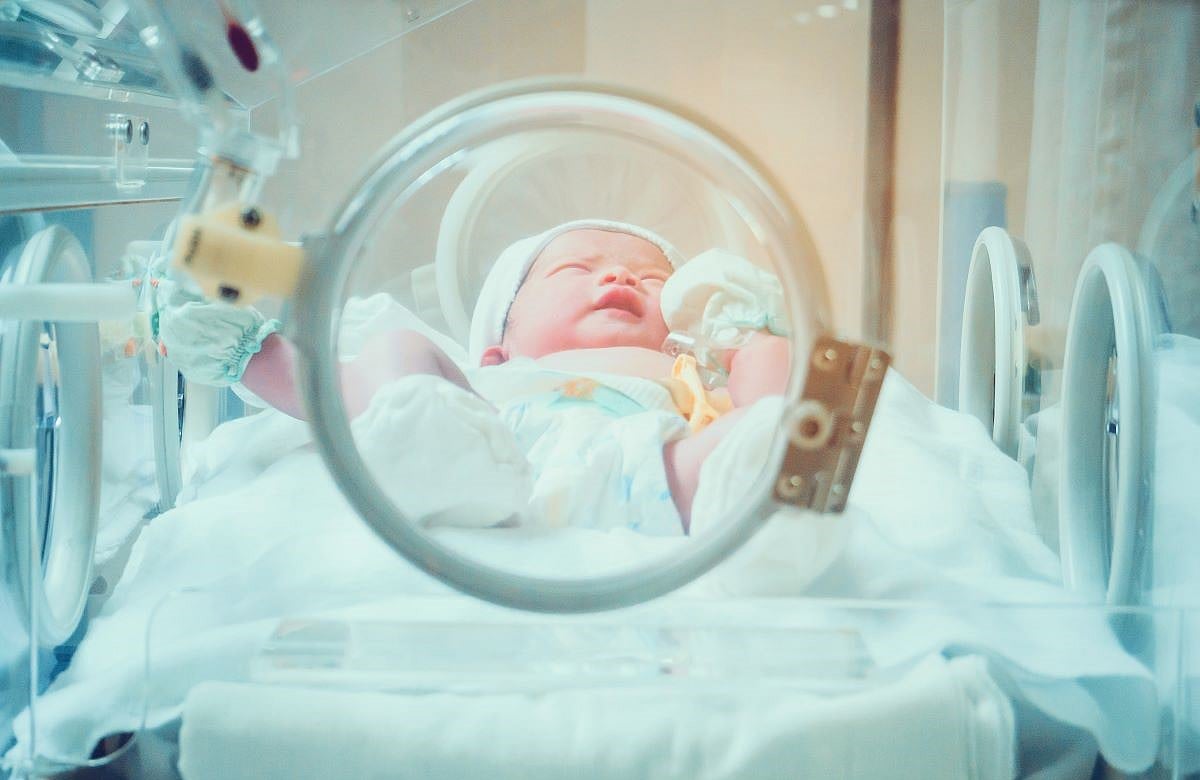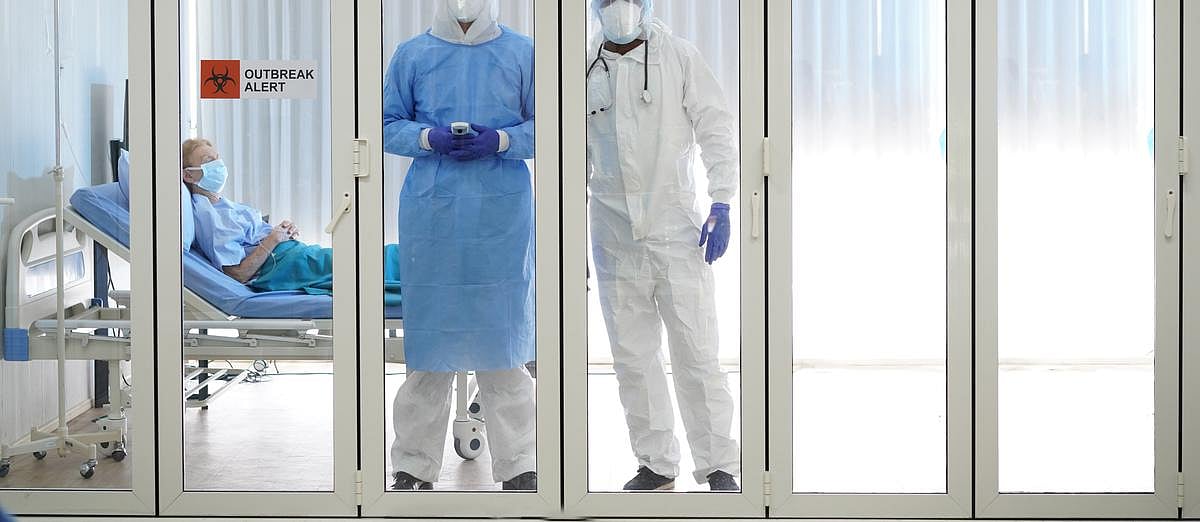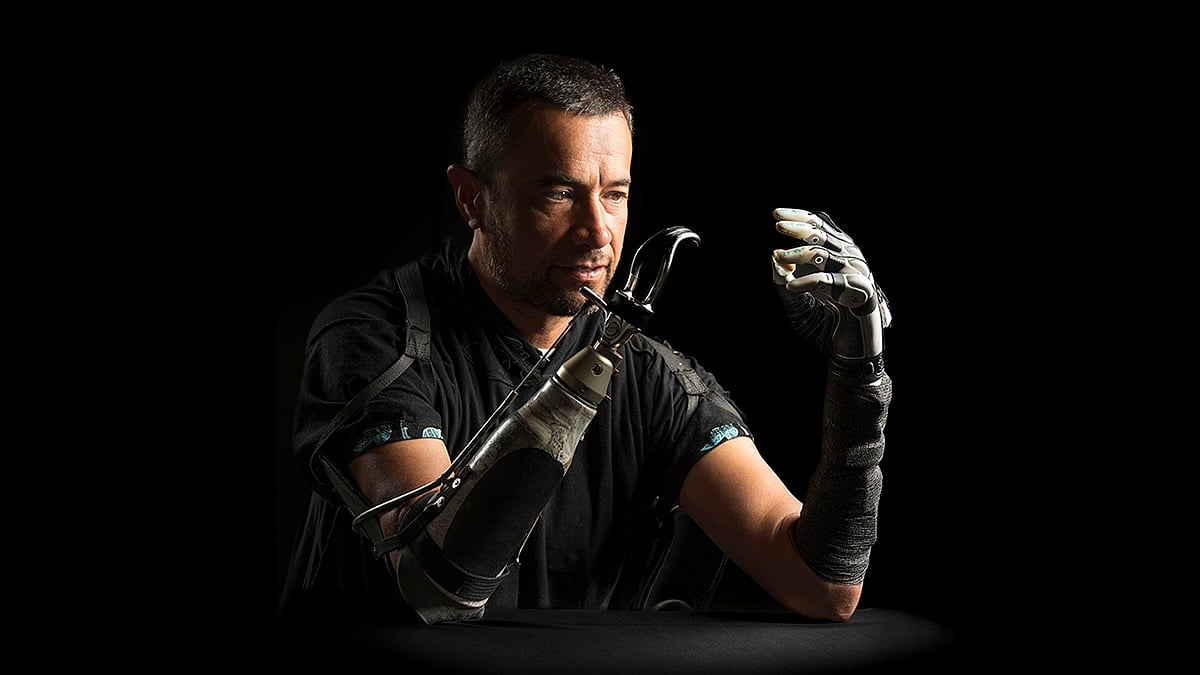Get Healthy!
Staying informed is also a great way to stay healthy. Keep up-to-date with all the latest health news here.
12 Dec
New Study: Acupuncture Shows Real Promise for Cancer ‘Brain Fog’
A new study finds acupuncture may help breast cancer survivors struggling with attention, memory and other cognitive problems.
11 Dec
Everyday Moves That Spike — or Reduce — Low Back Pain
Researchers look at how 10 common activities affect low back pain over the short and long term.
10 Dec
New Study Links Agent Orange to Rare Blood Cancer in Vietnam Vets
A landmark study finds Vietnam veterans exposed to Agent Orange face a significantly higher risk of developing myelodysplastic syndrome. Researchers hope this finding helps veterans get the health and disability benefits they’ve been denied for 50 years.
COVID Vaccines Cut ER Visits for Children, CDC Reports
COVID-19 vaccines given to children last fall helped keep many out of emergency rooms (ER) and urgent care, new data shows.
The U.S. Centers for Disease Control and Prevention (CDC) reported that COVID vaccines reduced the risk of ER visits by 76% in kids under age 4 and by 56% in kids ages 5 to 17 during the first six months after vaccina...
- I. Edwards HealthDay Reporter
- |
- December 15, 2025
- |
- Full Page
FDA Approves Two New Antibiotics to Treat Drug-Resistant Gonorrhea
Doctors now have new tools to fight gonorrhea, a common sexually transmitted infection that has grown harder to treat over time.
The U.S. Food and Drug Administration (FDA) has approved two new antibiotics: Zoliflodacin and gepotidacin.
This is the first new major treatment for gonorrhea in decades.
On Friday, the FDA cleared z...
- I. Edwards HealthDay Reporter
- |
- December 15, 2025
- |
- Full Page
FDA Weighs Strongest Black Box Warning for COVID Vaccines
The U.S. Food and Drug Administration (FDA) is considering adding the strongest safety warning available to COVID-19 vaccines.
The move has alarmed many outside health experts, who say there is no scientific basis for the warning.
People familiar with the plan told CNN the FDA is weighing whether to place a black box warning...
- I. Edwards HealthDay Reporter
- |
- December 15, 2025
- |
- Full Page
Too Much Drinking Contributes To Cancer Risk, Study Says
A new evidence review offers some sobering info for folks preparing to raise more than a couple celebratory glasses during Christmas or New Year’s.
Alcohol significantly increases a person’s risk of developing a wide range of cancers, and that risk rises further as more is imbibed, researchers reported in the journal Cancer...
- Dennis Thompson HealthDay Reporter
- |
- December 15, 2025
- |
- Full Page
Home-Delivered Food Boxes Improve Diabetes Control, Experts Say
Folks with diabetes might fare better if health care professionals pick out and deliver their groceries, a new study says.
Folks with diabetes who received home deliveries of diabetes-appropriate grocery boxes for three months had better blood sugar control by the end of the experiment, researchers reported in the December issue of the
- Dennis Thompson HealthDay Reporter
- |
- December 15, 2025
- |
- Full Page
Doing Nothing Appears Best Approach To Common Heart Defect Among Preemies
Doing nothing at all to manage a common fetal heart defect might improve the survival odds of babies born prematurely, compared to treatment with drugs, a new clinical trial suggests.
A “wait and see” approach to patent ductus arteriosus (PDA) doubled a preemie’s chances of survival, compared with using drugs to treat the...
- Dennis Thompson HealthDay Reporter
- |
- December 15, 2025
- |
- Full Page
Some Can Slowly Taper Off Antidepressants Without Risk Of Relapse, Review Concludes
It’s safe to slowly taper some people off antidepressants after their depression fades, rather than continuing the drugs indefinitely, a new evidence review says.
People who slowly tapered off antidepressants while receiving psychological counseling had a similar risk of relapse to those who kept taking the drugs with or without ther...
- Dennis Thompson HealthDay Reporter
- |
- December 15, 2025
- |
- Full Page
Mothers' Milk Might Be Key To Avoiding Childhood Food Allergies
Farm kids tend to have far fewer allergies than urban children, and a new study offers one possible explanation: The milk provided by breastfeeding moms.
Children who grow up in farming communities have immune systems that mature faster, with higher levels of protective antibodies during their first year of life, researchers reported Dec. ...
- Dennis Thompson HealthDay Reporter
- |
- December 15, 2025
- |
- Full Page
Most Receive Shock Therapy Without Psychological Counseling, Survey Says
Most people receiving shock therapy for mental health problems aren’t receiving any sort of psychological counseling before having their brains zapped, a new study says.
Only a third of patients said they’d been asked about recent stressful events or childhood traumas like abuse or neglect before being given electroconvul...
- Dennis Thompson HealthDay Reporter
- |
- December 15, 2025
- |
- Full Page
How to Head Off Tendon Trouble
Injure a tendon and you might not notice right away, but beware: These injuries often fail to heal properly, putting everyday activities at risk.
"No matter how strong your muscle is, you’re not going to be able to have the functionality and the stability you need if a tendon is impaired," Nelly Andarawis-Puri, a bioengineering...
- Carole Tanzer Miller HealthDay Reporter
- |
- December 14, 2025
- |
- Full Page
Ignore the Influencers: Simple Showers Are Still Best
Listen to the influencers, skin-care specialists say, and your daily shower could do more harm than good.
"Your skin is a barrier," said Dr. Nicole Negbenebor, a dermatologic surgeon at University of Iowa Health Care, told The Associated Press. "So you want to treat it right, and then sometimes there can be too much of a good thin...
- Carole Tanzer Miller HealthDay Reporter
- |
- December 13, 2025
- |
- Full Page
New Sunscreen Ingredient Could Soon Be Allowed in the U.S.
Americans may soon have access to a new sunscreen ingredient already used around the world.
The U.S. Food and Drug Administration (FDA) announced Dec. 11 that it is reviewing a proposal to allow bemotrizinol in sunscreens sold in the United States.
The ingredient is already approved and widely used in Europe, Australia and part...
- I. Edwards HealthDay Reporter
- |
- December 12, 2025
- |
- Full Page
Many Older Americans Don’t See Themselves as Disabled, Survey Finds
Americans may be getting older and need help doing things that were once routine, but a new survey finds only a fraction of seniors see themselves as having a disability.
"It’s a familiar story," Megan Morris, director of the Disability Equity Collaborative at New York University, told KFF Health News. "Many people still fee...
- Carole Tanzer Miller HealthDay Reporter
- |
- December 12, 2025
- |
- Full Page
South Carolina Places 254 in Quarantine as Measles Cases Surge
South Carolina health officials say a measles outbreak is growing amid holiday travel and low vaccination rates, and they warn the spread could continue for weeks.
As of Dec. 10, the state’s Department of Public Health has confirmed 114 cases, nearly all in the state’s upstate region. Of 111 cases recorded there, 105 were in pe...
- I. Edwards HealthDay Reporter
- |
- December 12, 2025
- |
- Full Page
FDA Clears Home Brain-Stimulation Device to Help Treat Depression
An at-home device that sends a gentle electrical current to the brain to help treat depression has been cleared by the U.S. Food and Drug Administration (FDA).
Experts say the move could expand access to care for many folks.
The prescription headset, made by Sweden-based Flow Neuroscience, delivers low-level electrical stimulation to...
- I. Edwards HealthDay Reporter
- |
- December 12, 2025
- |
- Full Page
Smokers Who Vape More Likely To Quit Or Cut Back, Study Argues
Smokers who use cigarettes and vape devices interchangeably might not be doing themselves as much of a disservice as once feared, a new study says.
These "dual users" are more likely to eventually quit smoking than people who smoke without vaping, researchers reported Dec. 10 in the journal Nicotine & Tobacco Research.
D...
- Dennis Thompson HealthDay Reporter
- |
- December 12, 2025
- |
- Full Page
Virtual Nursing Doesn't Deliver, Hospital Nurses Say
Virtual nurses aren’t an effective way to help hospitals deal with a lack of staffing, a new study says.
Hospitals struggling to attract and retain nurses are trying out virtual nursing programs, in which nurses in remote locations rely on video and messaging technologies to keep tabs on patients, researchers said.
But these vi...
- Dennis Thompson HealthDay Reporter
- |
- December 12, 2025
- |
- Full Page
Improved Bionic Hand Has A Mind Of Its Own, Researchers Say
The best way to improve amputees’ control over a bionic hand is to give the hand a mind of its own, a new study argues.
A bionic hand that’s controlled by an artificial intelligence (AI) program, but under the direction of the amputee, provides the best approximation of normal hand dexterity, researchers said Dec. 9 in the jour...
- Dennis Thompson HealthDay Reporter
- |
- December 12, 2025
- |
- Full Page
New 15-Minute Test For Hepatitis C Paves Way For Same-Day Treatment
People could learn within 15 minutes whether they are infected with hepatitis C, thanks to a rapid test developed by Northwestern University.
The test will allow doctors to diagnose infections during an office visit and kickstart patients’ treatment before they leave, researchers said.
“This test could revolutionize HCV c...
- Dennis Thompson HealthDay Reporter
- |
- December 12, 2025
- |
- Full Page
Experimental Drug Provides Lasting Relief For Bleeding Condition
More than half of people with a rare life-threatening bleeding condition received lasting relief from an experimental antibody treatment, clinical trial results show.
Ianalumab, a monoclonal antibody, helped patients with immune thrombocytopenia (ITP) maintain safe platelet counts without serious bleeding episodes for at least a year, acco...
- Dennis Thompson HealthDay Reporter
- |
- December 12, 2025
- |
- Full Page




















